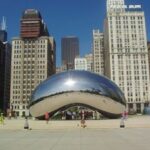Most don’t think of Fayetteville, North Carolina when the subject of the Civil War comes up. Yet Fayetteville, North Carolina is full of Civil War history. Here’s a rundown on the Civil War sites in the Fayetteville, North Carolina area.
The Museum of the Cape Fear Historical Complex
Begin your Civil War History rediscovery at the Museum of the Cape Fear Historical Complex, which contains an on site museum and Arsenal Park. At the museum, learn about North Carolina’s departing from the Union via exhibits and displays. I learned here that most citizens wanted to be a part of the Union and wanted the slavery issue settled. But instead, this state joined the Confederacy after Abraham Lincoln called for state troops to help suppress the rebellion after Fort Sumter was captured in South Carolina. Then Governor John W. Ellis wrote to Lincoln that sending troops was “in violation of the Constitution and a gross usurpation of power” to quell the rebellion.
Read diary excerpts of Malinda Ray, as she wrote about the surrender of the Federal Arsenal to the Confederacy in Fayetteville, as over 1,000 North Carolina militiamen stormed the place held just by 50 Federal troops.
Besides Civil War history, this museum contains two floors worth of Southeastern North Carolina history that goes all the way back to the Paleo Indians (some 10,000 years ago), featuring a couple of their arrowheads. It was the Scottish Highlanders who settled this region in 1732-33, and displays honoring their contributions are here, as well as more artifacts from the 18th-19th centuries covering The American Revolution, slavery, the textile industry, steamships, and more on through to a 1920’s general store diorama where you can hear old radio shows playing.
Arsenal Park is located just across the bridge from the museum and contains 4.5 acres of remnants of the Federal Arsenal which the state of North Carolina had seized and turned over to the Confederacy at the outbreak of the Civil War in 1861. This Fayetteville arsenal produced and stored arms and ammunitions, including Fayetteville rifles, which used .58 caliber shells. These Civil War collector items can nab tens of thousands of dollars today! But for three days spanning March 12-14, 1861, General Sherman’s troops destroyed this arsenal to punish the city for rebelling against the Union, as over 900,000 rounds of ammunition, signal rockets, and friction primers were assembled by women at this spot to aid the Confederacy.
Also on site at this Fayetteville complex is a late Victorian home, the 1897 Poe House that contains many artifacts that’ll take you back in time more than a hundred years. This mansion was owned by a successful Fayetteville, North Carolina brickyard owner/operator.
Museum of the Cape Fear Historical Complex: 801 Arsenal Ave., Fayetteville, North Carolina 28305. 910-486-1330. Free Admission.
The Market House
The Union’s pursuit was temporarily held off by gallant fighting Confederates at this Civil War spot in Fayetteville, which is the city’s prominent landmark in the downtown area on Hay Street. The Market House was spared by the vengeful Civil War forces of General William T. Sherman when town officials negotiated a settlement that spared most of the city. It has stood since 1832, and was the city hall for Fayetteville. The public auction of slaves took place on the open ground floor (arcade). It has been designated a National Historic Landmark. It is at this spot where the Market House stands that North Carolina government officials ratified the US Constitution and charted the University of North Carolina in 1789. The actual building where those events took place burned down in 1831.
The Market House: Downtown Fayetteville, North Carolina, at the roundabout where Hay, Gillespie, Person, and Green Streets converge. Free Admission.
Fayetteville Area Transportation Museum
At this museum, you’ll not only learn about transportation times in the Fayetteville area during the Civil War, this museum covers the history of transport that goes all the way back to Indian times and to the present times. It’s housed in the restored Cape Fear and Yalkin Valley Railroad Depot.
I learned some interesting things about the Civil War at this venue. General Sherman used Morganton Road to invade the city, coming from the west. Ironically, Morganton Road is still used today for invasions by shoppers who are heading to the city’s largest shopping complex, The Cross Creek Mall! One of the first things that General Sherman did when he got to Fayetteville, was to have the Arsenal destroyed. But this arsenal was actually constructed by the US government on “pie in the sky” transportation infrastructure commitments years earlier, beginning in 1838, on the dashing hopes that more railroad lines would be built to connect Fayetteville to the outside world. The lack of funding would dispel these ambitions, and only one short rail line was put in that lead back and forth to some coal and iron ore mines north of Fayetteville, North Carolina. These raw materials would be used against the Union during the Civil War.
Fayetteville Area Transportation Museum: 325 Franklin St., Fayetteville, North Carolina 28301. 910-433-1455. Free admission.
The Battle of Averasboro
The Averasboro Battlefield & Museum is some 16 miles from downtown Fayetteville, but well worth the visit for Civil War buffs who want to see the place where one of the Confederacy’s last real stands took place.
Start at the complex’s museum, where you’ll get some great background and detailed information about this Civil War battle by the friendly guides, including one history teacher. It is here where you’ll see many relics of the battle, including a lot of exploded shell parts, shotguns, Condfederate/Union belt buckles, letters, and diorama models of the battle scenes, and even an officer’s chair that was used by both sides’ officers. One of the most prized possessions at the museum was donated. It’s the uniform of Confederate Colonel Thomas James Purdie, whose 18th Regiment North Carolina troops accidentally shot and eventually killed the renowned General “Stonewall” Jackson at Chancellorsville, Virginia, in 1863. How big is Civil War History in North Carolina? When the Purdie family gave the uniform to the museum, some 200 people attended a ceremony just for this donation!
What do people think of William Tecumseh Sherman in North Carolina? You know, the general who spearheaded Union forces from Atlanta (destroying 30 per cent of the city) to the seaport of Savannah, leaving a rage of destruction, before heading north to Virginia, burning and destroying even more areas like Columbia, South Carolina, where the secession began. Since this is a family website, I won’t tell you what I was told, but believe me, it’s not nice, even though he showed more mercy to North Carolina than Georgia or South Carolina!
On March 15-16, 1865, North and South Carolinians fought the Union in a harsh two day battle that cost close to 1,500 casualties combined. While this battle (also called The Battle of Black River) was considered a stalemate, it’s purported that it was worthwhile for the Rebels since it did delay General Sherman’s virtually unhalted march to Virginia for a couple of days, and bought time for the Confederates to wage one more major offensive against the Union at Bentonville, North Carolina, just miles away.
Here’s some more of the interesting sites from the complex, easily accessible from the museum and with the assistance of the map that’s provided:
Farquhard Smith home
This Greek Revival home outside of Fayetteville, North Carolina, known as “Lebanon”, is just north of the museum, and was used as a Civil War hospital for the South.
Chicora Cemetery
The name of “Chicora” comes from the Indian word for “Carolina”. 56 Confederate soldiers are buried here who lost their lives at the Civil War Battle of Averasboro. What makes this place chilling are the gravestones, many of which are marked only by the mass amount of dead that are buried below each gravestone, showing just how horrific war can be to the point of not having the time or means to establish individual burials. Also onsite of this property is a former slave quarters built in the early 1800’s. Union soldiers were once buried here, too, but their remains were moved to the Federal Cemetery in Raleigh.
William Smith Plantation House
Also known as “Ashwood”, this Greek Revival home contained 14 rooms in the house, and served as a Union Field hospital during the Civil War. The piano inside this North Carolina plantation home was taken out and used as an amputation/operating table.
Old Bluff Church
The grounds of the Old Bluff Church were used as a Yankee encampment on March 14, 1865, one day before the Battle of Averasboro, and are just a few miles south of the battlefield complex. According to tour guide Mac Williams, the recorded church minutes of that day make no reference to the fact that the Union camped here en route to the fateful Civil War battle just a day later. In 1867, one reference was made about contributing to Confederate war widows, the only Civil War reference ever mentioned. The most notable burial here is one of David M. “Carbine” Williams, the inventor of the M1 Carbine Rifle.
Averasboro Battlefield Complex: On N.C. 82, and reachable from Exit 65 or Exit 71 on I-95. Box 1811, Dunn, North Carolina 28335. 910-891-5019. Free admission.
Reference:
- Museum of the Cape Fear Historical Complex: ncmuseumofhistory.org/osm/mcf.html






